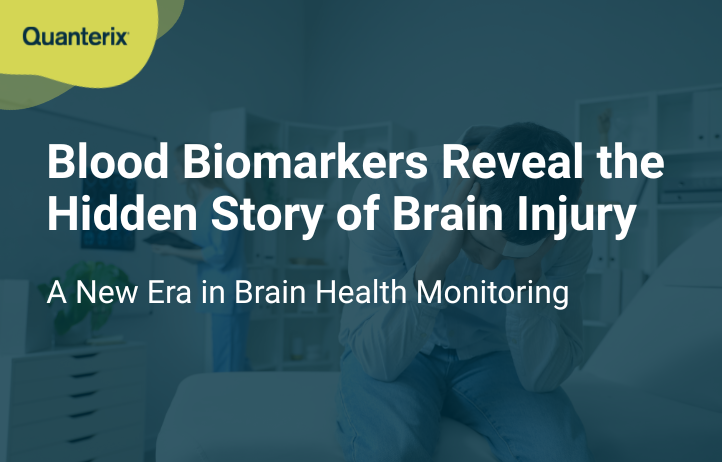
Blood Biomarkers Reveal the Hidden Story of Brain Injury: A New Era in Brain Health Monitoring
Every year, countless individuals experience head injuries, often with effects that linger long after the initial incident. Whether from a fall at home, a fender-bender on the road, or a collision on the playing field, the true impact of these injuries can remain hidden, sometimes for months or even years. Thanks to new advances in blood-based biomarker research for traumatic brain injury (TBI), scientists are now uncovering the subtle, ongoing changes that occur in the brain after trauma, offering hope for earlier detection and better outcomes for all.
Moving Beyond the Visible: The Challenge of Detecting Brain Injury
For decades, clinicians have struggled to fully assess the impact of traumatic brain injury, especially when symptoms are mild or delayed. Traditional tools, like neurological exams and imaging scans, often fail to capture the ongoing, microscopic changes happening inside the brain. This diagnostic gap can leave patients without answers and clinicians without clear guidance for treatment or monitoring. However, recent breakthroughs in ultrasensitive blood testing, powered by platforms like Quanterix’s Simoa®, are changing the landscape.
These assays can detect minuscule amounts of brain injury biomarkers that are released into the bloodstream when neurons or supporting cells are damaged. By tracking these biomarkers, clinicians and researchers can gain a real-time window into the brain’s health, even when outward symptoms have faded.
Groundbreaking Findings: What the Latest Study Shows
A new study published in Scientific Reports has taken a major step forward in our understanding of brain injury. Researchers used Simoa technology to measure three key biomarkers, neurofilament light chain (NFL), glial fibrillary acidic protein (GFAP), and phosphorylated tau (pTau-181), in individuals with a history of repetitive head impacts. Importantly, these measurements weren’t just taken once, but at multiple time points after injury, and the results were striking.
The study found dynamic changes in biomarkers like NFL, GFAP, and pTau-181 that suggest ongoing and delayed pathophysiological processes months after traumatic brain injury, highlighting the importance of longitudinal biomarker monitoring rather than single time-point measurements.
This means that brain injury is not a one-and-done event. Instead, the biological effects can unfold over weeks and months, even in people who no longer show obvious symptoms. By monitoring these changes over time, clinicians can gain a much clearer picture of recovery or identify when further intervention may be needed.
Why This Matters: From the Boxing Ring to Everyday Life
While the study included individuals with a history of repeated head impacts, such as retired boxers, its implications extend far beyond sports. Head injuries can happen to anyone, children on playgrounds, older adults at home, or anyone in an unexpected accident. The ability to track brain health over time using a simple blood test could radically change care for millions.
Early detection of ongoing brain changes can help guide decisions about returning to work, school, or sports, and may reduce the risk of long-term complications like cognitive decline or neurodegenerative disease. For families and caregivers, this means peace of mind and a path toward proactive care.
The Future of Brain Health: Personalized, Preventive, and Precise
Blood-based biomarkers for concussion and TBI are paving the way for a new era in brain health, one that is more personalized, preventive, and precise. By making it possible to monitor brain injury with a simple blood draw, these tools could soon become part of routine care for anyone at risk of TBI.
Looking ahead, ongoing research will continue to refine which biomarkers are most useful, how often they should be measured, and how results can best guide treatment.
Quanterix: Empowering Discovery and Better Outcomes
At Quanterix, we are committed to advancing the science of brain health. Our Simoa® technology is enabling researchers around the world to see what was once invisible, helping to unlock new insights, improve patient care, and ultimately protect the brain health of people everywhere.
The story of brain injury is often hidden, but with the power of blood-based biomarkers, we are finally able to read the signs and respond. Together, we are building a future where every brain injury is seen, understood, and treated with the precision it deserves.
Continue Exploring Brain Health Advances
- Discover how biomarker technology is shaping neurology research and improving understanding of brain injury progression.
- Explore our menu of ultrasensitive assays designed to support research across neurological conditions.
- Connect with our team to discuss how these tools may complement your studies or clinical efforts.
Reference:
Kamps S, van Amerongen S, Blujdea ER, et al. Plasma and MRI biomarkers capture neuronal damage in former professional boxers. Sci Rep. 2025;15(1):20005. Published 2025 Jun 6. doi:10.1038/s41598-025-93066-6